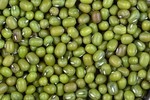
In its report, titled “Agricultural Indicators System: Food Sufficiency and Security”, the Bureau of Agricultural Statistics (BAS) said that the Philippines continues to import much of its fresh produce, including coffee, peanuts, and garlic.
The country also remains a net importer of livestock and poultry products, such as beef, carabeef, and chicken.
Import rates for Garlic, Mongo dropping
“Higher but declining dependency on importation was noted for garlic, peanut, and mongo. In 2011, there was a significant reduction for garlic and mongo.”
Last year, the import dependency ratio (IDR) for garlic dropped by 18.25 percentage points to 46.35%, while that of mongo went down by 11.12 percentage points to 42.52%.
IDR indicates the extent of the country’s dependency on importation relative to domestic consumption. A high ratio implies greater dependency on importation.
For peanuts, the IDR dropped slightly to 67.26%, while low IDRs were also recorded for tomato, cassava, and potato. For rice, the IDR was pegged at 6.09% or 12.64 percentage points lower than the 2010 record, while corn dropped to 0.94%, even as coffee imports remained high at an IDR of 45.1%.
Meats still high on imports
The agency also noted that importation was still observed in livestock and poultry products, such as beef, carabeef and chicken. According to the BAS, IDRs for beef was at 19.88%, carabeef at 27.29%, and chicken at 10.97%.
“Except for tilapia, the reference fishery products exhibited dependency on importation. IDRs of tuna and shrimps and prawns were the highest corresponding to 6.19% and 3.66%.”
The agri boom in the country however meant that the BAS found the grocery sector to be far more self-sustaining in the Philippines.
“The increase in the domestic production of rice in 2011 pushed up the country’s self-sufficiency ratio to 93.91%. This was higher by 12.64 percentage points from its year 2010 record.’
“Self-sufficiency was nearly registered for corn with SSR going up to 99.06% in 2011 or by 0.42 percentage point from the 2010 level. Adequacy in production was continuously reported for sugarcane and coconut.”





